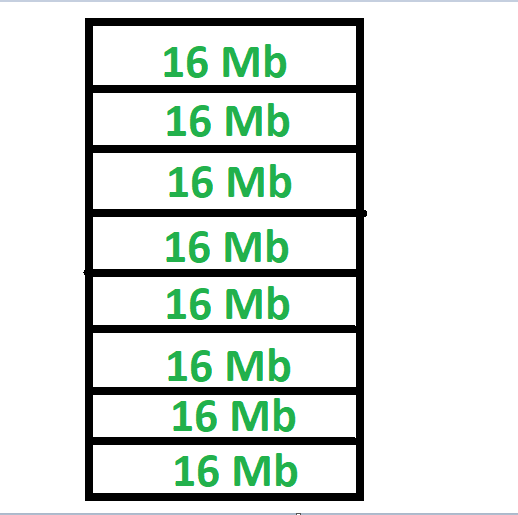1. 固定分区:
具有固定分区的多道编程是一种连续的内存管理技术,其中主内存被分成固定大小的分区,这些分区可以是相等或不等的。每当我们必须分配进程内存时,就会找到一个足够大以容纳进程的空闲分区。然后将内存分配给进程。如果没有可用空间,则进程在队列中等待分配内存。它是最古老的内存管理技术之一,易于实现。

2. 可变分区:
具有可变分区的多道程序是一种连续的内存管理技术,其中主内存不划分为多个分区,并且进程会被分配一块足够大的空闲内存以供其容纳。剩下的空间被认为是可以被其他进程进一步使用的空闲空间。它还提供了压缩的概念。在压缩中,空闲空间和未分配给进程的空间组合在一起,形成单个大内存空间。

固定分区和可变分区的区别:
| S.NO. | Fixed partitioning | Variable partitioning |
|---|---|---|
| 1. | In multi-programming with fixed partitioning the main memory is divided into fixed sized partitions. | In multi-programming with variable partitioning the main memory is not divided into fixed sized partitions. |
| 2. | Only one process can be placed in a partition. | In variable partitioning, the process is allocated a chunk of free memory. |
| 3. | It does not utilize the main memory effectively. | It utilizes the main memory effictively. |
| 4. | There is presence of internal fragmentation and external fragmentation. | There is external fragmentation. |
| 5. | Degree of multi-programming is less. | Degree of multi-programming is higher. |
| 6. | It is more easier to implement. | It is less easier to implement. |
| 7. | There is limitation on size of process. | There is no limitation on size of process. |